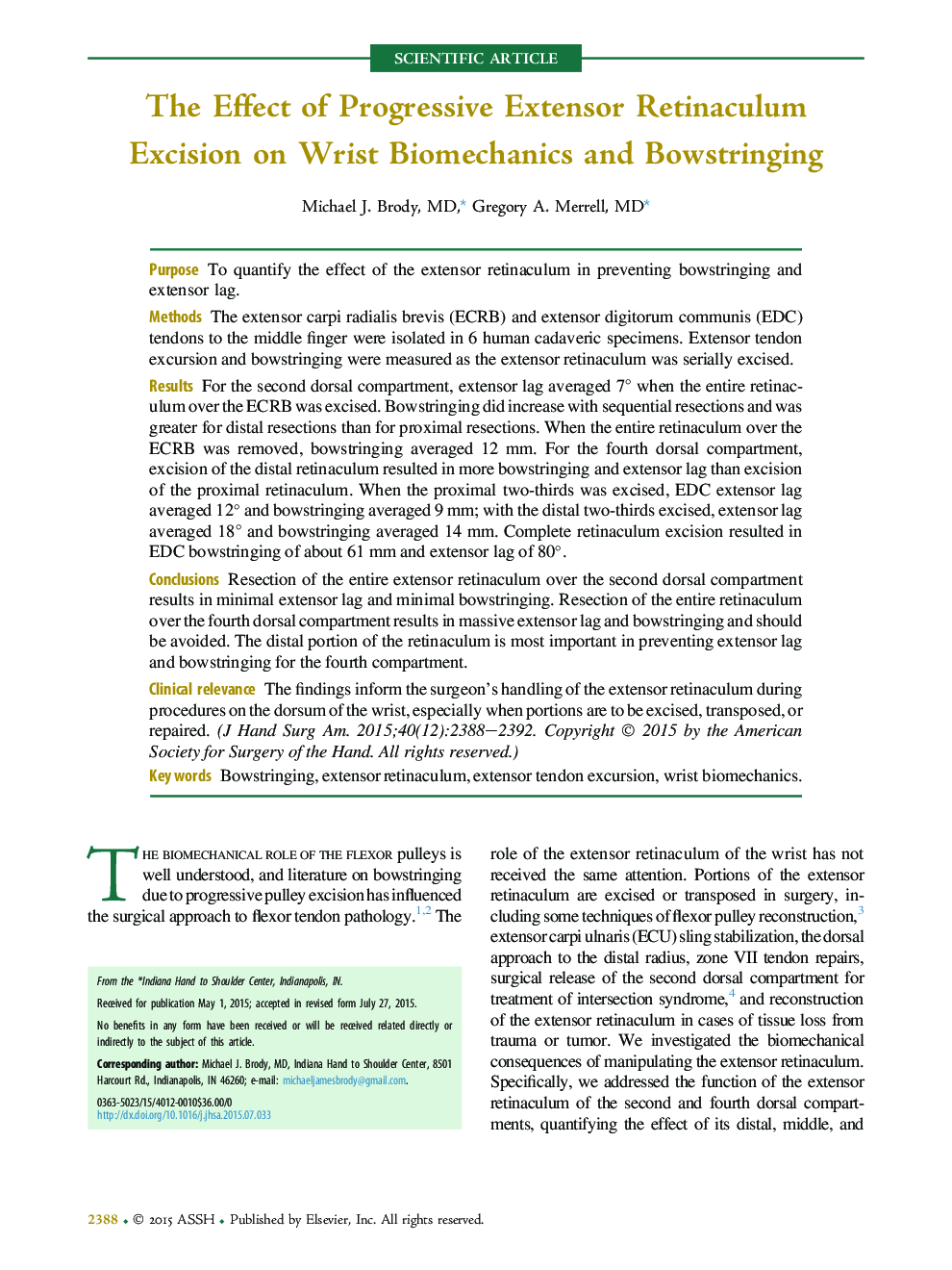| Article ID | Journal | Published Year | Pages | File Type |
|---|---|---|---|---|
| 4066094 | The Journal of Hand Surgery | 2015 | 5 Pages |
PurposeTo quantify the effect of the extensor retinaculum in preventing bowstringing and extensor lag.MethodsThe extensor carpi radialis brevis (ECRB) and extensor digitorum communis (EDC) tendons to the middle finger were isolated in 6 human cadaveric specimens. Extensor tendon excursion and bowstringing were measured as the extensor retinaculum was serially excised.ResultsFor the second dorsal compartment, extensor lag averaged 7° when the entire retinaculum over the ECRB was excised. Bowstringing did increase with sequential resections and was greater for distal resections than for proximal resections. When the entire retinaculum over the ECRB was removed, bowstringing averaged 12 mm. For the fourth dorsal compartment, excision of the distal retinaculum resulted in more bowstringing and extensor lag than excision of the proximal retinaculum. When the proximal two-thirds was excised, EDC extensor lag averaged 12° and bowstringing averaged 9 mm; with the distal two-thirds excised, extensor lag averaged 18° and bowstringing averaged 14 mm. Complete retinaculum excision resulted in EDC bowstringing of about 61 mm and extensor lag of 80°.ConclusionsResection of the entire extensor retinaculum over the second dorsal compartment results in minimal extensor lag and minimal bowstringing. Resection of the entire retinaculum over the fourth dorsal compartment results in massive extensor lag and bowstringing and should be avoided. The distal portion of the retinaculum is most important in preventing extensor lag and bowstringing for the fourth compartment.Clinical relevanceThe findings inform the surgeon’s handling of the extensor retinaculum during procedures on the dorsum of the wrist, especially when portions are to be excised, transposed, or repaired.
